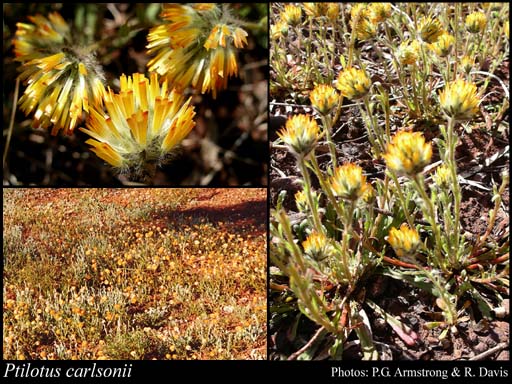- Reference
- Victorian Naturalist 5:74 (1889)
- Conservation Code
- Not threatened
- Naturalised Status
- Native to Western Australia
- Name Status
- Current
Erect or spreading annual, herb, 0.05-0.3 m high. Fl. yellow-orange, Aug to Oct. Clay, loam. Plains.

Scientific Description
Annuals, stems several, more or less prostrate, glabrescent, with nodose hairs. Leaves present, 5-100 mm long, 0.5-10 mm wide, glabrescent, with nodose hairs; basal rosette present; cauline leaves alternate. Spikes yellow or orange, ovoid or hemispherical, solitary, with densely arranged flowers. Bracts 6-8 mm long, coloured, hairy, not awned or mucronate, with an obscure midrib. Bracteoles 5.1-6 mm long, coloured, hairy, awned or mucronate, with a prominent midrib. Outer tepals 10.2-11.7 mm long, not entire. Inner tepals 9.8-11.7 mm long, glabrous within. Style 1.7 mm long, curved, obliquely fixed to ovary. Seeds (1.2-)1.3-1.4(-1.5) mm long, glossy, brown. Distribution: South West and Eremaean Botanical Region; IBRA regions: Coolgardie, Murchison, Nullarbor.
Distribution
- IBRA Regions
- Avon Wheatbelt, Coolgardie, Murchison, Nullarbor.
- IBRA Subregions
- Eastern Goldfield, Eastern Murchison, Mardabilla, Merredin, Nullarbor Plain, Southern Cross.
- Local Government Areas (LGAs)
- Coolgardie, Dundas, Kalgoorlie-Boulder, Koorda, Menzies, Narembeen, Trayning, Yilgarn.